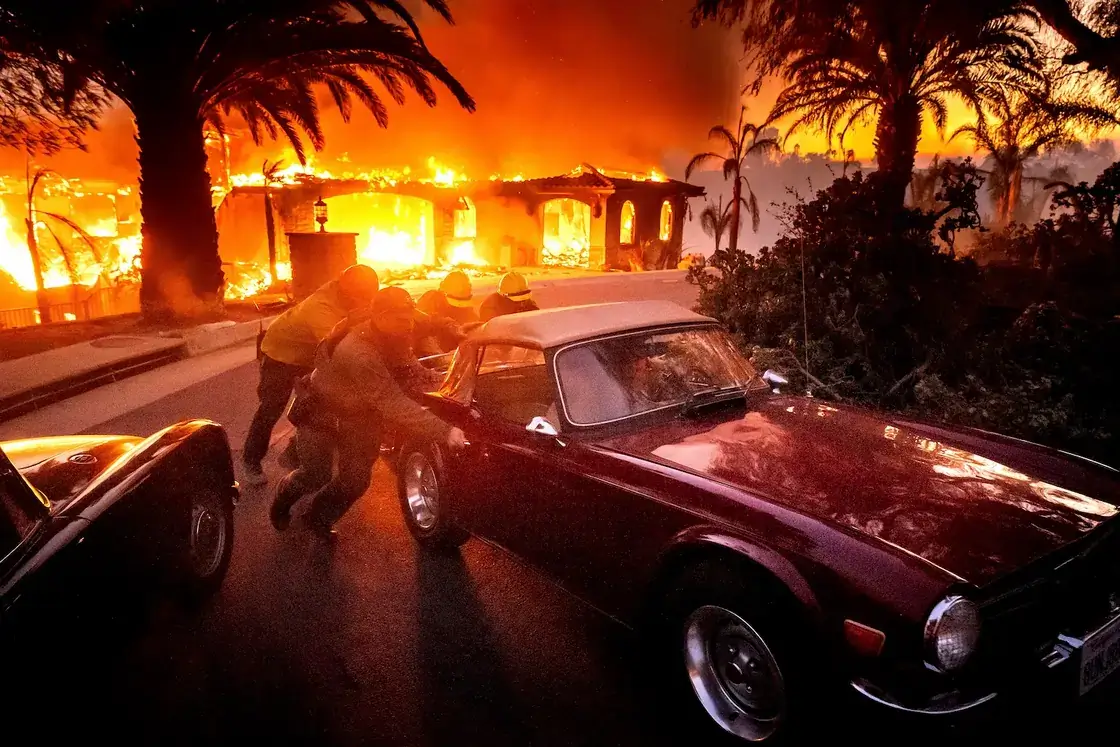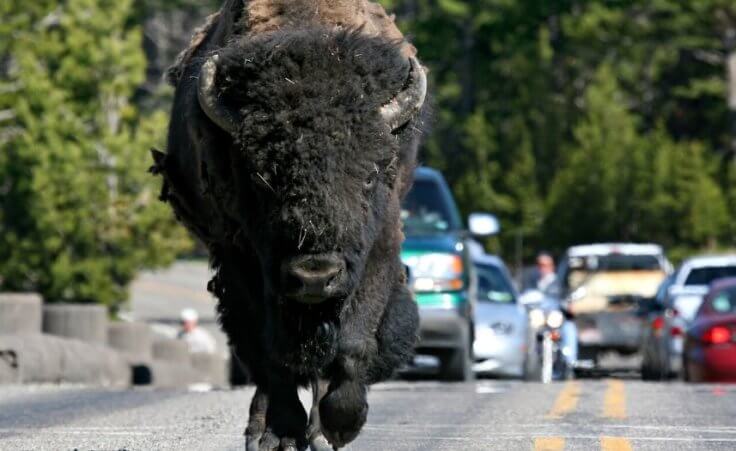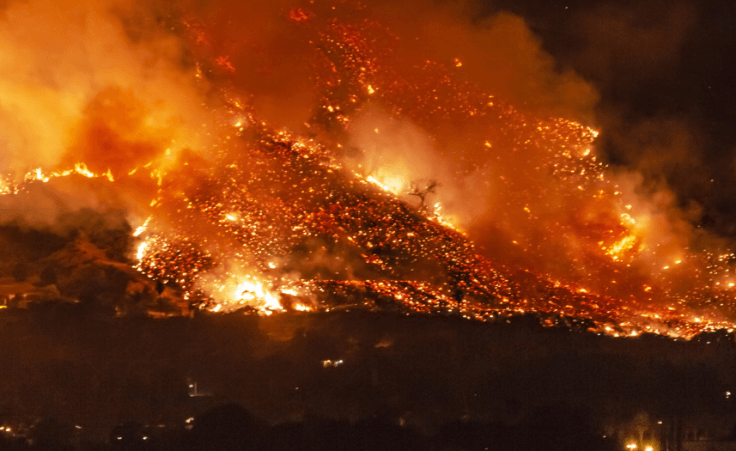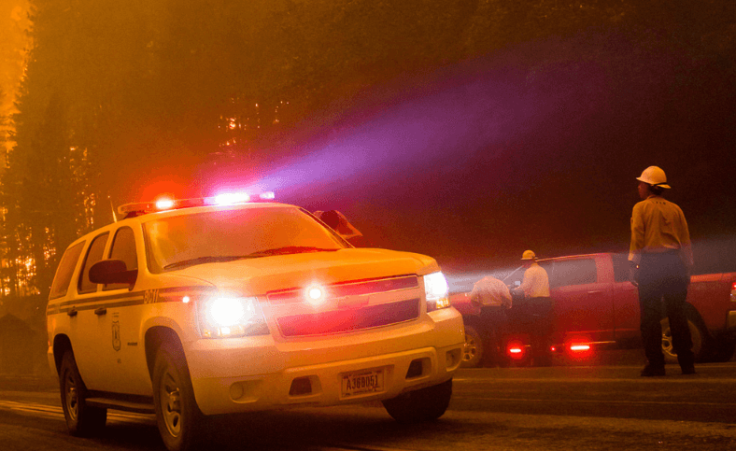
Firefighters and sheriff's deputies push a vintage car away from a burning home as the Mountain Fire burns in Camarillo, Calif., on Wednesday, Nov. 6, 2024. (AP Photo/Noah Berger)
Wednesday, November 6, strong winds surged a bushfire into a devastating wildfire overnight in Southern California. The blaze, called Mountain Fire, remains out of control as of Friday morning, with only about 5 percent contained. How big is the Mountain Fire, and how much damage has it done so far?
The size of Mountain Fire
After only two days, over 20,000 acres are in ash. Governor Newsom declared a state of emergency in Ventura County, and officials ordered around 14,000 residents to evacuate. Another smaller fire broke out on Wednesday, leading to an extreme fire risk from Malibu into the San Gabriel Mountains, near LA, where “winds could gust near 100 mph.” A few folks are being treated for non-threatening injuries like smoke inhalation, but no one has yet died.
A little over 100 structures, mostly homes, have been destroyed so far. According to the Associated Press, “Officials in several Southern California counties urged residents to be on watch for fast-spreading blazes, power outages and downed trees during the latest round of notorious Santa Ana winds.”
Join me in praying for the people in Southern California threatened by the fires. Pray for the firefighters working tirelessly to keep the blaze in check, and that no one would perish in the fire.
Where did the fire come from?
The source of the fire is still under investigation, but experts have some idea of why wildfires are burning more fiercely in recent years. One is, of course, the rising global temperature. Another is more surprising: Not enough wildfires. As I explained in 2021, many wildernesses in America benefit from regular wildfires, as they clear out dead brush and act to reset the forests. These smaller wildfires can keep brush from accumulating, which can lead to more destructive fires down the line.
Indeed, before Europeans came to America, Native Americans proactively set fire to woods for precisely this purpose. For decades, however, California has had the policy of putting out fires immediately, meaning that, over time, dead brush has accumulated to create conditions for even deadlier forest fires.
Fulfilling our Garden of Eden purpose in nature
Each person has a role to play. Researchers have recognized the danger of leaving wildernesses unattended, firefighters protect people’s homes and lives, the government alerts residents about the danger, and more. Firefighters bravely held the line against the raging flames, and Native Americans used to set fires to forests to tend to them.
All of these represent ways of carrying out the mandate given in the Garden of Eden: to rule over and subdue the Earth. In one case, the Native Americans worked harmoniously with nature to exercise dominion. In another, courageous firefighters protect people and homes from destruction. Both bring a measure of order to natural chaos.
Getting into nature, today
The point is that fulfilling our purpose of subduing the earth has a wide range of applications, especially in modern life. Protecting nature for our own urbanization, protecting the Amazon Rainforest, supporting local park initiatives, starting a community garden, and much more can connect us to nature in a way that fulfills our God-given mandate.
Whether gardening in your backyard, taking a stroll through a downtown park, or tending to indoor plants, make time for nature. It will lead to greater well-being, as it fulfills a God-ordained purpose. Humans benefit immensely from time in nature, both cognitively and emotionally. Manual labor of some kind, especially connected to nature, benefits us as well—and it’s no wonder, God hard-wired us for his creation.
As I discuss in my latest philosophy blog, Genesis gives us ways of living in the world by engaging in it, existing not just as rational computers.
Are you making time for nature? If not, how can you start this week?













